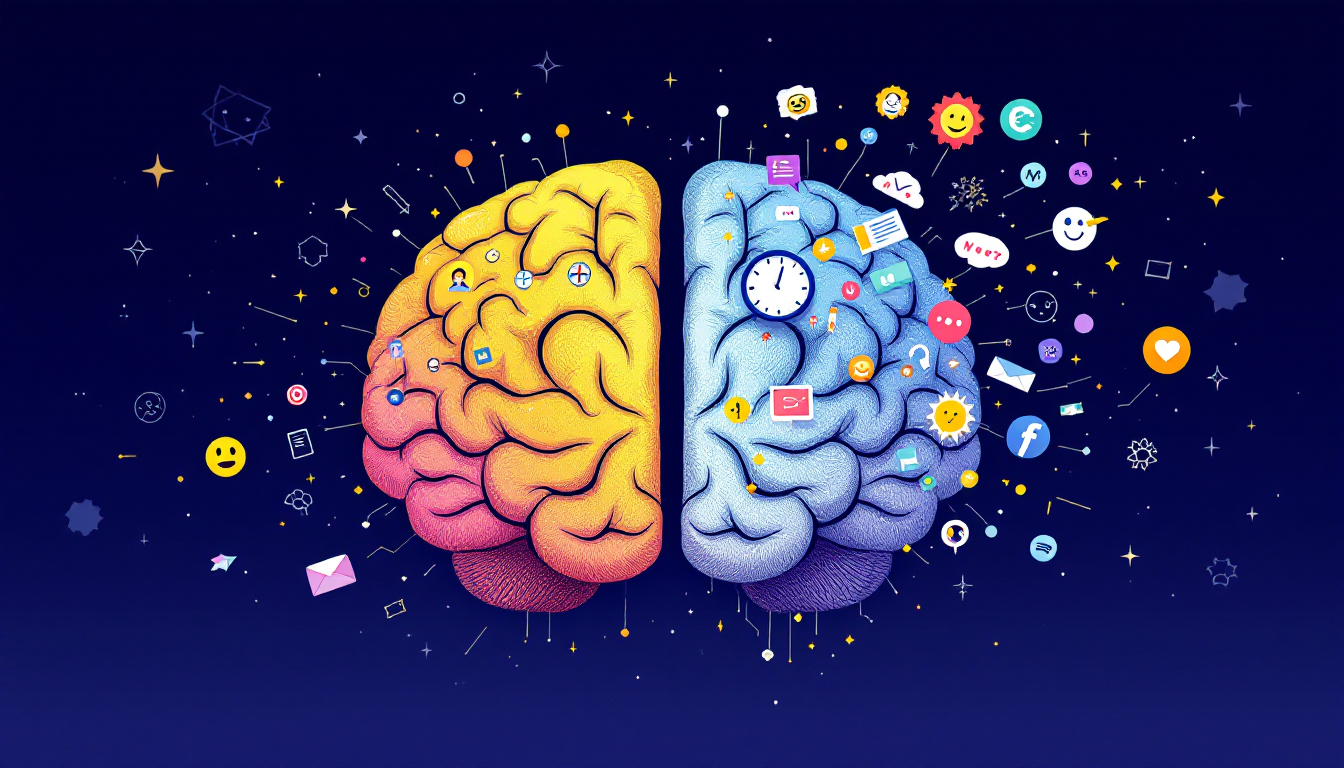5 Common Mistakes Parents Make with ADHD Discipline (and How to Fix Them)

You've tried everything. You've pleaded, you've bribed, you've even yelled. And yet, the same frustrating behaviors keep happening. It feels like you’re on a never-ending merry-go-round of tantrums, forgotten chores, and impulsive outbursts. You're not alone, and it's not your fault. The truth is, the discipline strategies you learned as a child or that work for neurotypical kids often don’t just fall flat for a child with ADHD; they can actually make things worse.
This isn't a parenting problem; it’s a brain-wiring problem. A child with ADHD isn’t intentionally trying to push your buttons; their brain simply works differently. Trying to fit a square peg into a round hole will only lead to frustration for both of you. But there is a better way. In this article, we’ll uncover the 5 common mistakes parents make with ADHD discipline and provide you with practical, expert-backed strategies that will help you course-correct, build a more peaceful home, and connect with your child on a deeper level.
Why Discipline Feels Different with ADHD

Before we dive into the common pitfalls, let's talk about why standard discipline approaches often miss the mark. The ADHD brain is wired for novelty and stimulation, not for long-term planning or emotional regulation. This is why discipline strategies for ADHD need to be different.
When a child with ADHD has a meltdown over a seemingly small request, it’s not defiance. It's a genuine struggle with emotional dysregulation and impulse control, which are core symptoms of ADHD. The part of their brain responsible for “thinking before acting” and managing big feelings is still developing. So, when you see “defiance,” know that it's often a misunderstood behavior driven by a neurological difference. Understanding this is the first step toward effective ADHD parenting tips and building a more compassionate approach to discipline.
The 5 Common Mistakes (and How to Fix Them)
1. Using Harsh Punishments or Yelling
It’s easy to resort to yelling or harsh punishments when you're at your wits' end. The logic is simple: if the consequence is bad enough, they'll learn their lesson. But for a child with ADHD, this approach is a dead end. Yelling triggers their nervous system's fight-or-flight response, making it impossible for them to process your instructions. It also erodes your relationship and can increase anxiety and shame, leading to more, not fewer, behavior problems.
- Why it backfires with ADHD kids: Harsh punishments and yelling activate the emotional part of the brain, not the logical part. This means your child can't learn from the experience, and it can increase their anxiety and feelings of shame.
-
What to do instead:
-
Use “time-ins” instead of “time-outs.” A “time-in” is a calm-down corner where you sit with your child, helping them regulate their emotions. This teaches them how to self-soothe with your support, building a skill they’ll use for a lifetime.
-
Focus on connection, not control. Get down to their level, use a calm voice, and validate their feelings before addressing the behavior.
-
2. Expecting Immediate Compliance
"Put on your shoes." "It's time to go." "Finish your homework." For you, these are simple requests. For your child with ADHD, it’s a sequence of commands that require them to stop what they're doing, switch tasks, and remember instructions. This is a monumental task for a brain with executive function deficits. They aren’t ignoring you; they’re struggling with something called "delayed processing."
-
ADHD and delayed processing: The ADHD brain can take longer to process and execute instructions, especially if it’s distracted or engaged in a preferred activity.
-
What to do instead:
-
Use visual cues and timers. Set a visual timer to show them how much time they have before a transition. A 5-minute timer can work wonders for preparing them to transition from playtime to bedtime.
-
Give transition warnings. Provide a heads-up before you need them to switch tasks. Say, "In five minutes, we're going to clean up." This gives their brain time to prepare for the change.
-
Break down tasks. Instead of "Clean your room," say, "First, put the toys in the bin. Then, put the books on the shelf."
-

3. Inconsistent Rules and Follow-Through
Consistency is the bedrock of effective discipline, but it’s incredibly challenging to maintain when you're exhausted and overwhelmed. The problem is that inconsistency—giving in on a bad day or making empty threats—teaches your child that the rules are negotiable. This is particularly confusing for a child with ADHD, who needs predictable routines to thrive.
-
Why routine and consistency are essential: A predictable schedule provides a sense of safety and predictability that reduces anxiety and makes it easier for the ADHD brain to know what to do next.
-
How to set up predictable consequences and schedules:
-
Create a visual schedule. Use pictures or words to map out your child's day, morning routine, after-school activities, and bedtime routine. Post it on the fridge so everyone can see it.
-
Use "if-then" statements. "If you finish your homework, then you can have screen time." This helps them understand the direct link between their actions and the consequences.
-
Follow through, every time. If you say there will be a consequence, it’s crucial to follow through calmly and consistently. This doesn't mean being rigid; it means being reliable.
4. Ignoring Emotional Dysregulation
Is it a tantrum or a meltdown? Understanding the difference is crucial. A tantrum is a deliberate, goal-oriented behavior (e.g., screaming to get a cookie). A meltdown is an involuntary, overwhelmed response to sensory input or emotional overload. For a child with ADHD, what you see as a "tantrum" is often a meltdown. Punishing a meltdown is like punishing a fever; it's a symptom of a nervous system that’s gone into overdrive.
- Tantrums vs. meltdowns: A tantrum is a choice; a meltdown is a loss of control. Punishing a meltdown is counterproductive and can increase shame.
-
What to do instead:
-
Teach co-regulation and emotional labeling. Sit with your child during a meltdown and use calm words to describe what they are feeling: "I see you're feeling really frustrated right now. It's okay to feel that way."
-
Help them label their emotions. Use an emotion wheel or visual aids to help them identify if they feel "angry," "sad," or "overwhelmed." This builds their emotional vocabulary.
-
Address the root cause. After they've calmed down, talk about what triggered the meltdown and problem-solve together.
-
5. Overlooking Positive Reinforcement
The ADHD brain is driven by dopamine, the "feel-good" neurotransmitter. When a child with ADHD has a success—no matter how small—their brain gets a little dopamine hit. This makes them more likely to repeat that behavior. But parents often get so focused on correcting negative behaviors that they forget to celebrate the positives.
- ADHD brains thrive on dopamine: The ADHD brain needs more stimulation and reward to stay engaged and motivated.
-
What to do instead:
-
Implement a reward system or sticker charts. This can be a game-changer for motivating kids to complete chores or homework. The key is to make the rewards immediate and meaningful to them.
-
Use specific, enthusiastic praise. Instead of "Good job," say, "Wow, you remembered to put your dishes in the sink all by yourself! That was so helpful!"
-
"Catch them being good." Actively look for moments when your child is following directions or using a new skill. The more you praise the positive, the less you'll have to correct the negative. This is one of the most powerful ADHD parenting tips you can use.
-
Fixing the Pattern – What Actually Works
So, what does effective how to discipline a child with ADHD look like in practice? It’s a shift from punishment to proactive support.
-
Clear Structure and Predictability: A structured, predictable environment is a safe haven for an ADHD brain. Use visual schedules, set clear routines, and make sure your child knows what’s coming next.
-
Natural Consequences Over Punishment: Instead of arbitrary punishments, use natural consequences. If they don’t put their toys away, the toys will not be available to play with tomorrow. This teaches responsibility without shame.
-
Empathy + Support = Long-Term Improvement: Lead with empathy. When your child struggles, your first response should be "I see you," not "What's wrong with you?" This builds trust and resilience, paving the way for long-term behavioral improvement.
Final Thoughts for Frustrated Parents

Parenting a child with ADHD is a marathon, not a sprint. There will be good days and bad days, and you will make mistakes. That’s okay. Give yourself grace. The fact that you’re seeking out new strategies shows how much you care. You are your child’s best advocate.
If you’re feeling overwhelmed, know that you don’t have to do this alone. Consider working with an ADHD coach or a therapist who specializes in neurodivergent behavior. They can provide personalized strategies and support for your family. For more resources, check out trusted organizations like CHADD and Understood.org. They offer a wealth of information and support groups that can make all the difference.
By focusing on connection, consistency, and positive reinforcement, you can move from a cycle of frustration to a partnership of growth. You've got this.
Bonding with your child is a journey, not a destination. Download the Bonding Health App today and start building a stronger, healthier bond, one moment at a time.


